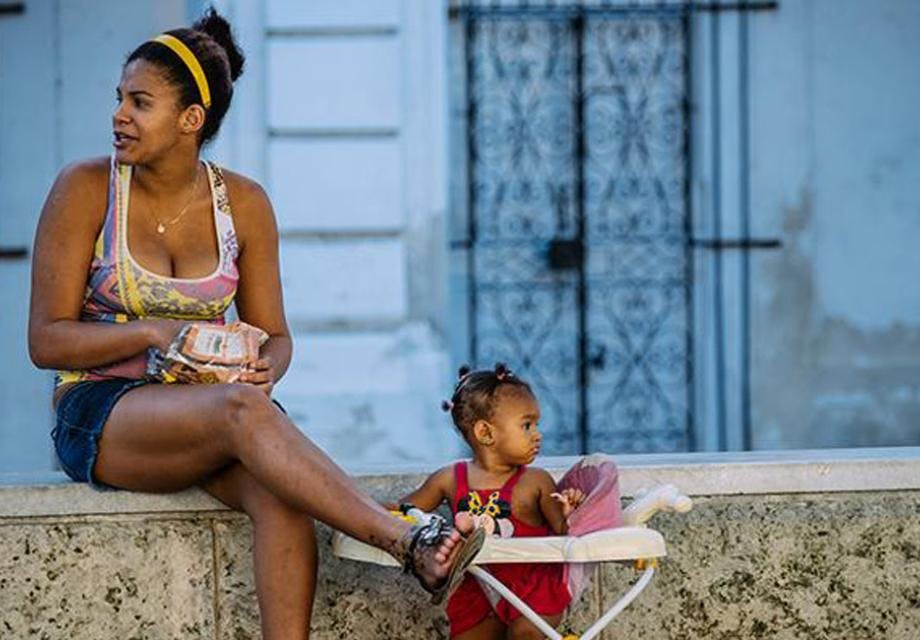Barriers to sexual and reproductive health and rights among women living with HIV in Latin America and the Caribbean
Caitlin Mahon
26 April 2019
Studies have revealed that women living with HIV in Latin America and the Caribbean are at a greater risk of harm. Misinformation around their contraceptive options and sexual and reproductive health rights has resulted in high levels of unwanted sterilization and abortion in the region.
Women living with HIV in Latin America and the Caribbean are in significant need of sexual and reproductive health services (SRHS), reveals a new systematic review from the region. Compared to women not living with HIV, they have fewer contraceptive choices, more unplanned pregnancies, are at an increased risk of post-partum sterilisation and exposure to sexual and institutional violence.
The review synthesised an array of studies in English, Spanish and Portuguese on women living with HIV of a childbearing age in Latin America and the Caribbean and published between 2004 and 2017. These studies looked at use of and access to SRHS associated with family planning, including abortion and antenatal care. The final analysis included 18 studies comprising 5,672 women living with HIV from 13 countries in the region.
They found that women living with HIV in the region were more likely to use condoms as their only contraceptive, but given the difficulty reported by women in negotiating condom use, dual methods for preventing pregnancy are preferred. But according to the review, there was an absence of sexual reproductive health counselling for women living with HIV, with many HIV clinics not offering or having available other methods of contraception.
Women living with HIV also reported very low use of contraceptives other than condoms, ranging from 6.3% in Argentina to 3.2% in Mexico with pills being the most used, followed by injectable hormonal methods and, lastly, intrauterine devices (IUD).
Emergency contraception was poorly accessed generally – in Argentina, just 20% of women living with HIV used it, but 80% knew of its existence. Barriers to contraception for this group included high cost, lack of information and restricted availability in healthcare settings. Alarmingly, many women reported condoms and sterilisation as the only contraceptive options they thought available to them. Abortion rates were also higher among women living with HIV. Among women living with HIV there were 79% more induced abortions, with 48% citing fear of transmission to their babies as the main reason to undergo an abortion.
In the few studies that analysed sterilisation, one study in Brazil from 2005 found sterilisation to be 82% more common among women living with HIV compared to those not living with HIV. In 2015, a similar study from Brazil found no difference in sterilisation between the groups, but women living with HIV who gave birth via C-section were more likely to be sterilised post-partum compared to women not living with HIV. Given strict sterilisation laws in Brazil, there are concerns that women living with HIV undergoing voluntary sterilisation may be being given misinformation around the risks of HIV transmission to their child.
The authors noted, “Given the available interventions recommended by WHO, [women living with HIV] can have planned pregnancies and vaginal deliveries with minimal possibility of perinatal transmission, and HIV seropositivity should never be a motivation for unwanted sterilization or abortion.”
Women living with HIV in the region are also two to 16 times more likely to experience violence than HIV-negative women. In several studies from Mexico, Honduras, El Salvador, Nicaragua and Argentina, sexual, physical and psychological violence were repeatedly reported by women living with HIV. In Mexico, HIV disclosure to a sexual partner and asking to use a condom were triggers for violent acts.
Institutional violence was more frequently reported when women living with HIV were accessing care – including antenatal care and family planning services – outside of their normal HIV care, which they reported as being usually friendly and supportive. Women living with HIV who were diagnosed upon becoming pregnant in Argentina and Brazil were also more vulnerable to institutional violence because of a lack of knowledge around HIV and limited time to internalise their diagnosis. Some women who were aware of their status before becoming pregnant reported institutional violence, and stigmatising behaviour from healthcare workers who felt they shouldn’t have become pregnant.
In their conclusion, the authors state “Improving the use of and access to SRHS among [women living with HIV] dictates the need to provide safe preventive interventions during and prior to prenatal care, with modern contraceptive options and support for these women in making informed decisions.”
Get our news and blogs by email
Keep up-to-date with all our latest news stories and blogs by signing up to the Be in the KNOW news digest.
